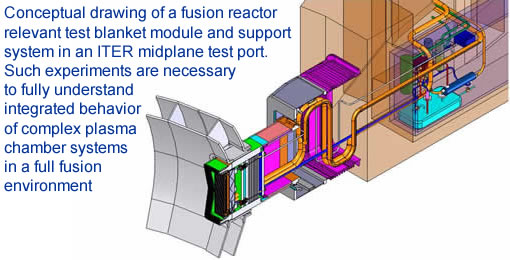Plasma Chamber Systems
Burning Plasmas for fusion energy production are extremely intense, high-energy neutron radiation sources that exist in a unique, complex physical environment. Understanding the effects of these energetic neutrons, photons and other fusion environmental conditions on the plasma chamber materials and systems surrounding the burning plasma is our challenge. We call this field of engineering science Fusion Nuclear Science and Technology, or FNST. ITER will usher in this nuclear era for fusion science. But significant advances in FNST will be required to go beyond ITER and prepare the science basis needed to determine if and how tritium self-sufficiency and high temperature power extraction can be simultaneously attained in a practical plasma chamber system, that: (a) is compatible with plasma operation, (b) can be reliably operated inside the plasma vacuum vessel, and (c) will realize the potential environmental advantages of fusion. Because nuclear plasma chamber systems perform a wide range of functions (e.g., tritium production, nuclear shielding, heat removal, tritium removal and control), and experience a wide range of physical conditions (e.g., nuclear, magnetic, thermal, chemical), FNST is broad and requires the synergy of many fundamental engineering, physical, plasma, and material science disciplines.


